Wholesale Cuts of Beef Wholesale Cuts of Sheep
The goat carcase is essentially made up of the same primals and cuts as lamb however eating characteristics vary and are very dependent on how the animal was raised and treated.
In Australia, there are generally two types of goatmeat available – rangeland and farmed. Whilst similar in many ways, the different types vary in composition, flavour and tenderness to suit a range of foodservice applications.
For further information about our high-quality Australian and New Zealand meat available for domestic supply or global export, see our diagram of goat cuts below.
Contact us at RTC Foods for all your wholesale, retail and foodservice meat orders.
Shank
Shanks come from the area of meat and bone that sits above the knee joint and below the leg. It's prepared from both a forequarter and a leg by a cut through the joint that connects it to either the shoulder or leg bone.
Goat shanks are almost always slow cooked in liquid to deliver flavour from the bone and pull-apart tenderness. Trimmed shanks, or drumsticks, have had the end of the shank bone scraped clean of excess fat and meat to expose the bone.
Cooking Method
Slow braise

Neck
The neck is prepared from a carcase by a cut between the 3rd and 4th vertebrae.
As a well used area, neck cuts contain a high amount of connective tissue which imparts rich flavour and tenderness when cooked low and slow. Neck chops are prepared from a bone-in goat neck and rosettes are cut with the central bone left in. The neck fillet roast is boneless and sits between the neck and the square cut shoulder.
COOKING METHOD
Slow braise
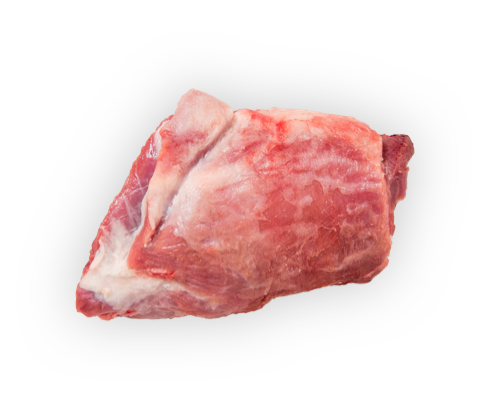
Forequarter
There is one forequarter per animal incorporating the neck, shank, breast and shoulder and accounting for around 30% of the carcase. As a well exercised area with ample connective tissue, forequarter cuts suit slow, moist cooking; revealing tender and flavoursome meat.
The forequarter produces a number of cuts including roasts, racks, ribs and chops to accommodate a range of foodservice applications. The shoulder can be prepared bone in to impart additional flavour or easily deboned for a versatile butterflied cut which can also be stuffed and rolled. Slow cooked shoulder cuts are also perfect for shredding and using in a variety of dishes and cuisines. For an economical alternative to the loin rack, the forequarter rack is prepared from the shoulder; the blade is removed and the ribs trimmed and exposed, creating what looks like a row of 'chops'. The forequarter rack contains plenty of connective tissue, so is best suited to moist, slower cooking methods.
COOKING METHOD
Slow braise, slow roast, sous vide
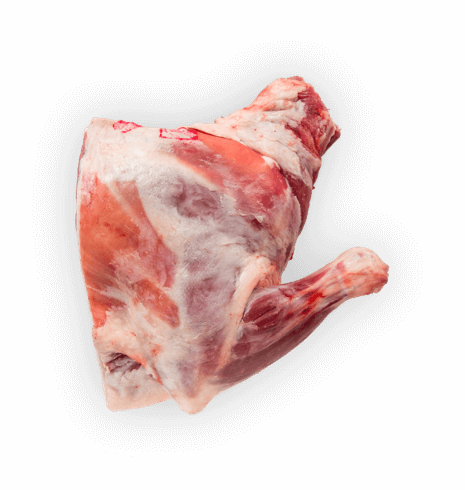
Shank
Shanks come from the area of meat and bone that sits above the knee joint and below the leg. It's prepared from both a forequarter and a leg by a cut through the joint that connects it to either the shoulder or leg bone.
Goat shanks are almost always slow cooked in liquid to deliver flavour from the bone and pull-apart tenderness. Trimmed shanks, or drumsticks, have had the end of the shank bone scraped clean of excess fat and meat to expose the bone.
COOKING METHOD
Slow braise
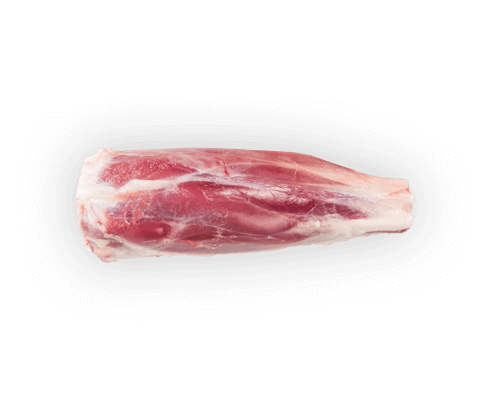
Rack
Accounting for 9.5% of the carcase, the rack is prepared from a side of goat by removing the forequarter using a straight vertical cut along the rib bone and a horizontal cut along the top of the flap.
It contains rib bones, backbone and the thick, meaty rib eye muscle. Reaching its full potential when roasted the rack is usually further prepared by the removal of the cap and frenching the bones. Cutlets are simply cut from the rack – versatile and easy to cook, cutlets are tender and suit high temperature cooking methods such as pan-fry and grill.
COOKING METHOD
Roast, pan fry, grill
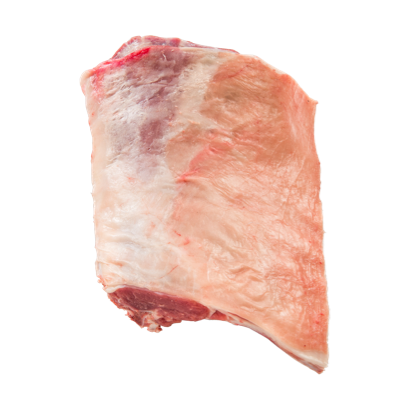
Shortloin
The shortloin sits between the leg and the rack and accounts for 12.1% of the carcase. Tender and versatile, short loin cuts respond best to high heat roasting and grilling. The loin chop, also known as the lamb 'T-bone', includes the fillet and eye of loin muscles which sit on opposite sides of the bone.
A shortloin can be roasted whole or remove the bones to stuff and roll; the external layer of fat around this cut imparts flavour and helps prevent the roast drying out. The eye of loin consists of the entire eye muscle that lies along the spine – as a minimally used muscle, it is as tender as the tenderloin and perfect for stuffing and trussing.
COOKING METHOD
Roast, grill, pan fry
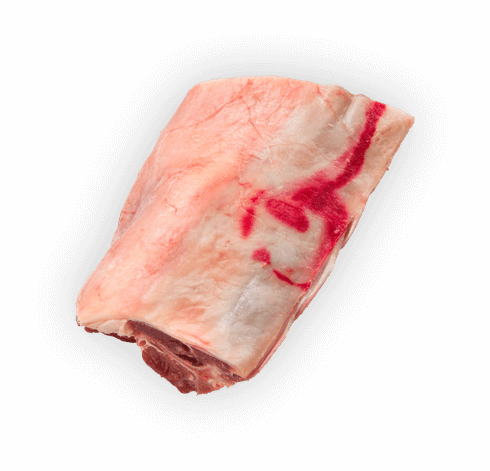
Chump
Chump is prepared from a Leg Chump On and is removed by a straight cut approximately 12mm from the hip joint. Accounting for 3% of the carcase, there are two chumps per animal offering tender, flavoursome and textural roasts, steaks and chops.
The Rump is prepared from the Chump by the removal of the tail/flank and the cap muscle and subcutaneous fat. Renowned for its tenderness and flavour, rump is best suited for roasting, or diced for dry heat cooking methods – it can also be sliced into steaks. Chump Chops are the equivalent of a beef rump steak left on the bone and are slightly bigger than cutlets or loin chops. These cuts are suited to grill and pan-fry cook methods and are tender with extra flavour imparted from the bone.
COOKING METHOD
Roast, Grill, Pan Fry
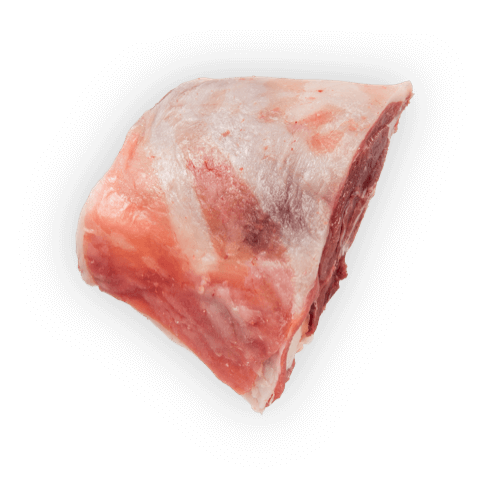
Tenderloin
The tenderloin, or fillet, is prepared from a side of goat by removing the muscle in one piece from the underside of the shortloin.
Because it comes from an area that does very little work, it has virtually no fat or connective tissue and is one of the most tender cuts of goat. Delicate in flavour, tenderloin suits gentle, quick and dry cooking methods to retain its juiciness.
COOKING METHOD
Grill, pan fry

Breast & Belly
Accounting for around 12% of the carcase, the breast and belly are derived from the underside of the chest and are the remaining portions after preparation of major primals.
Consisting of layers of full flavoured meat and rich goat fat, they suit low and slow cooking methods. Ribs can be prepared from the breast or the belly and consist of several muscles with a portion of the rib bones that can be trimmed if required and are characterised by their layers of fat and lean meat.
COOKING METHOD
Roast, braise, cure, smoke, confit, fry
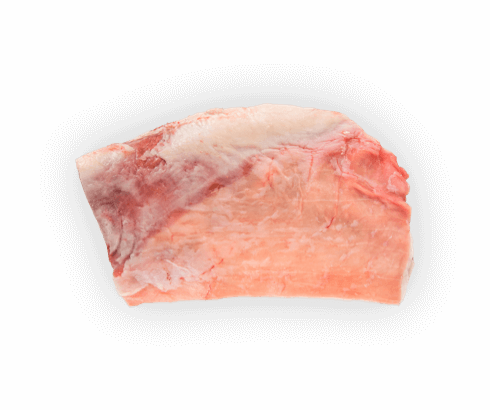
Leg
Derived from the hindquarter, there are two legs per animal accounting for around 30% of the total goat carcase. Leg is prepared by the removal of the chump using a right angle cut at the back of the hip bone.
The shank is usually tipped at the caudal level of the shin meat on the tibia. A thin layer of covering fat is generally left to assist in retaining juiciness during cooking. Tender and flavoursome, the leg is traditionally roasted whole or deboned and butterflied; however, its three distinct muscles – knuckle, silverside and topside, can be sub-primaled to create a range of smaller roasts, steaks and chops.
COOKING METHOD
Roast, Braise, Pan Fry, Grill
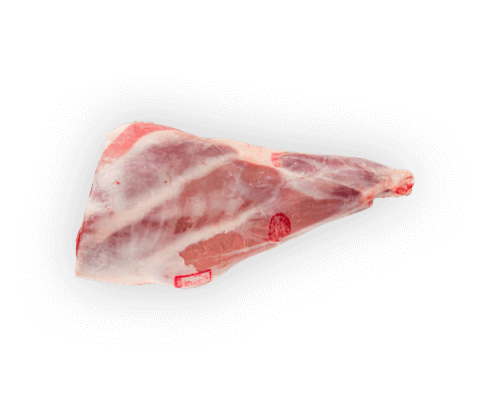
Shank
Shanks come from the area of meat and bone that sits above the knee joint and below the leg. It's prepared from both a forequarter and a leg by a cut through the joint that connects it to either the shoulder or leg bone.
Goat shanks are almost always slow cooked in liquid to deliver flavour from the bone and pull-apart tenderness. Trimmed shanks, or drumsticks, have had the end of the shank bone scraped clean of excess fat and meat to expose the bone.
COOKING METHOD
Slow braise

Source: https://rtcfoods.com.au/wholesale-goat-cuts/
0 Response to "Wholesale Cuts of Beef Wholesale Cuts of Sheep"
Post a Comment